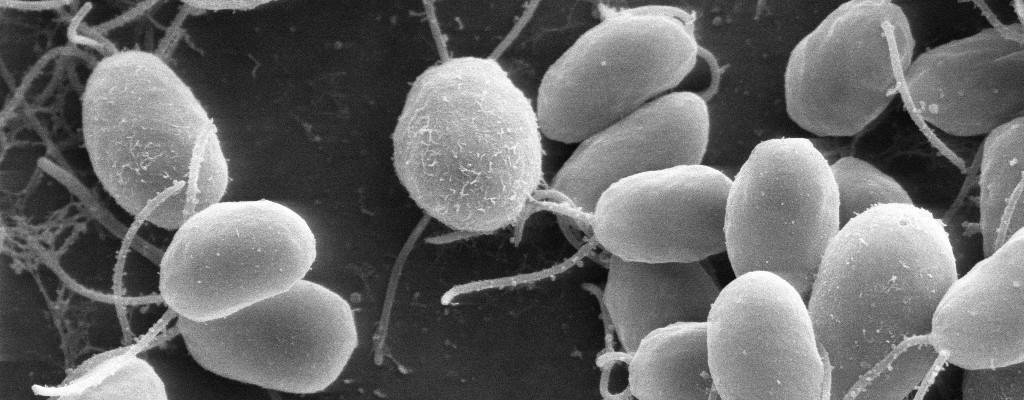
Scanning electron microscope image, showing an example of green algae, Chlamydomonas reinhardtii. (Credit: Dartmouth Electron Microscope Facility, Dartmouth College)
While the possibility to produce hydrogen in biohydrogen reactors exists for some time now, most studies are skeptical about its commercial prospects. New research results from Uppsala University, however, suggest that efficient production of hydrogen with green algae may become possible in the future. The study published in PNAS may give us a clue on how to solve low efficiency problem.
The world must find a way of producing fuel from renewable energy sources to replace the fossil fuels. Hydrogen is today considered one of the most promising fuels for the future and if hydrogen can be produced directly from sunlight you have a renewable and environmentally friendly energy source.
One biological way of producing hydrogen from solar energy is using photosynthetic microorganisms. Photosynthesis splits water into hydrogen ions (H+) and electrons (e-). These can later be combined into hydrogen gas, (H2) with the use of special enzymes called hydrogenases. This occurs in cyanobacteria and green algae, which have the ability to use energy from the sun through photosynthesis and produce hydrogen through their own metabolism.
That green algae can produce hydrogen under certain conditions has been known and studied for about 15 years, but low efficiency has been a problem, i.e. the amount of energy absorbed by the algae that is transformed into hydrogen. One enzyme that has the ability to use sunlight to split water into electrons, hydrogen ions and oxygen is Photosystem II. Several studies have shown that some of the electrons from the enzyme are used to produce hydrogen gas under special conditions. But some have stated that most of the hydrogen gas gets its energy from other paths in the metabolism of the green algae. This would entail that it is not a matter of actual direct production of hydrogen from sunlight, and that green algae are no more efficient as energy crops than plants.
A group of researchers at Uppsala University, led by Senior Lecturer Fikret Mamedov and Professor Stenbjörn Styring, have now made a discovery that changes the view on hydrogen production from green algae. The researchers studied in detail how Photosystem II works in two different strains of the green algae Chlamydomonas reinhardtii. By measuring exactly how the amount and activity of Photosystem II varies under different conditions, and thereby affects hydrogen production, they found that a considerable amount of the energy absorbed by Photosystem II goes directly into hydrogen production.
“As much as 80 per cent of the electrons that the hydrogen-producing hydrogenases need come from Photosystem II, which is much more than previously believed. This means that most of the hydrogen production is driven directly by solar energy. The discovery gives us hope that it in the future will be possible to control the green algae so that the efficiency becomes significantly higher than it is today”, says Professor Stenbjörn Styring.
The study received funding from, among others, the Swedish Energy Agency, the Knut and Alice Wallenberg Foundation and the Swedish Research Council.
Anneli Waara
Volgusheva, A., Styring, S., & Mamedov, F. (2013). Increased photosystem II stability promotes H2 production in sulfur-deprived Chlamydomonas reinhardtii Proceedings of the National Academy of Sciences DOI: 10.1073/pnas.1220645110
